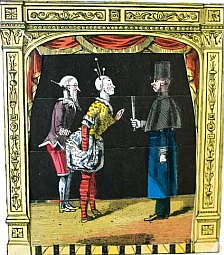
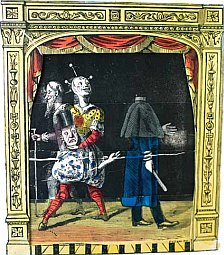 A century before Luigi Serafini’s Codex Seraphinianus perplexed readers worldwide, another very unusual moveable, hand-colored rare book by Dean’s of London had a similar effect in intriguing readers. Dean’s New Book of Dissolving Scenes, London: Dean & Son, (1861), featuring five, bright working transformations which have their scenes “dissolve” into another when tabs are pulled, is definitely a work of art and enigma.
A century before Luigi Serafini’s Codex Seraphinianus perplexed readers worldwide, another very unusual moveable, hand-colored rare book by Dean’s of London had a similar effect in intriguing readers. Dean’s New Book of Dissolving Scenes, London: Dean & Son, (1861), featuring five, bright working transformations which have their scenes “dissolve” into another when tabs are pulled, is definitely a work of art and enigma.
In more recent years, collectors, pop culture enthusiasts, cryptanalysts and intrigued people in general demonstrated a cult type of behavior for Luigi Serafini’s work. This drove demand for a limited number of his books such as Codex Seraphinianus, Pulcinellopedia, and Storie naturali, to unsurpassed price levels for the limited, out-of-print editions. What exactly is the appeal that these books possess that attract an astounding number of book lovers to their pages? How does a book such as these become rare in less than 20 years since its initial release, and continue to remain popular after multiple releases? For some answers to these and similar questions, one must take a closer look at these books’ characteristics:
– Enigmatic, strangely fascinating collections that can be described as very “weird.”
– Bright, imaginary illustrations that are puzzling in a cryptic way, and very untraditional.
– Limited releases that fall short of market demand at various stages.
– International publishing, exposure and appeal.
Using these criteria as the basis of our research, we further concentrated on identifying similar books that share some of these attributes in an attempt to uncover tomorrow’s strange rare book success stories. They are listed as follows:
1. Typographic Notes I (Typografische Notizen I). Basel:Romano Hanni, 1992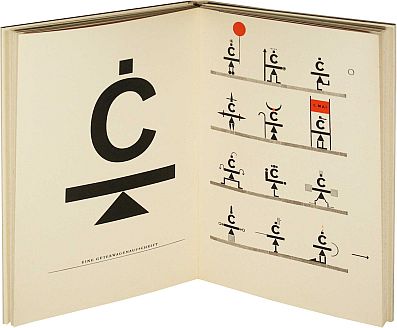
175 copies bound in the accordion style. It is a collection of observations on elements of the universe such as time, energy, and more. Most of the notes are illustrated with symbols and type. Hanni Romano has been experimenting with unusual compositions of letter forms and symbols since the early 1980s. Even though the accompanied text is in German and it contains a pictorial supplement with the English translation, the book is well designed, fascinating ,and thought provoking. In 2010, The Typographic Notes II (Typografische Notizen II) was released in a similar limited edition. It contains a commentary on various aspects of life, some of which are illustrated with mysterious and intriguing design elements.
2. Codex Espangliensis from Columbus to the Border Patrol. Gómez-Peña, Guillermo and Chagoya, Enrique [illustrator]; Santa Cruz: Moving Parts Press 1998.
An edition of 50, signed and numbered. Each page has an antiquated image that is juxtaposed with modern images and questions of placement in society for Latin citizens. The questions raised from the images are political, religious, and add to the social commentary of the history of America in pop culture fashion. It’s a codex created in the tradition of the pre-Hispanic codices that amalgamates over 500 years of culture.
3. An Intimate Cosmogony Cosmogonie Intime. Peyré, Yves and Rice, Ray [illustrator]; Santa Cruz: Moving Parts Press 2005.
From a total edition of 96 numbered copies printed in Janson types on Fabriano Artistico paper by Felicia Rice. The pen-and-ink drawings of Ray Rice with multiple colors using the pochoir or stenciling process enrich and integrate the unusual visual into the poetic text.
Our finds have a few important differences from Serafini’s popular works. The first is that Serafini’s editions were offered at much larger quantities. The smallest release was for Storie naturali which was available in 660 copies, compared to the 175 of the largest in the group above, Typographic Note. The second distinction is the emphasis on production, material, and technique which again with the exception of Storie naturali, were not emphasized and were not significant contributing factors to Serafini’s attractiveness.
Despite the differences between these books, they all have, with the exception of our adult movable book from the 1800’s, young age in common. The future of the book in the age of the Kindle and the iPad is most definitely an interesting conversation topic. Judging from the success stories of some of these most recent editions, the book as a form of an artistic expression is alive and well. Similar to fine art, book art has a bright future ahead. One may even argue that it already has an advantage, given that it is 3-D by nature.
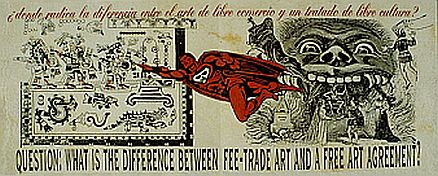
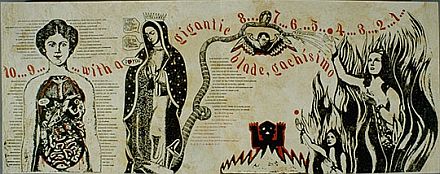
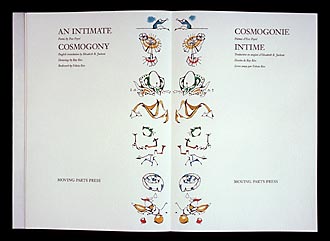

{ 0 comments… add one now }
{ 1 trackback }